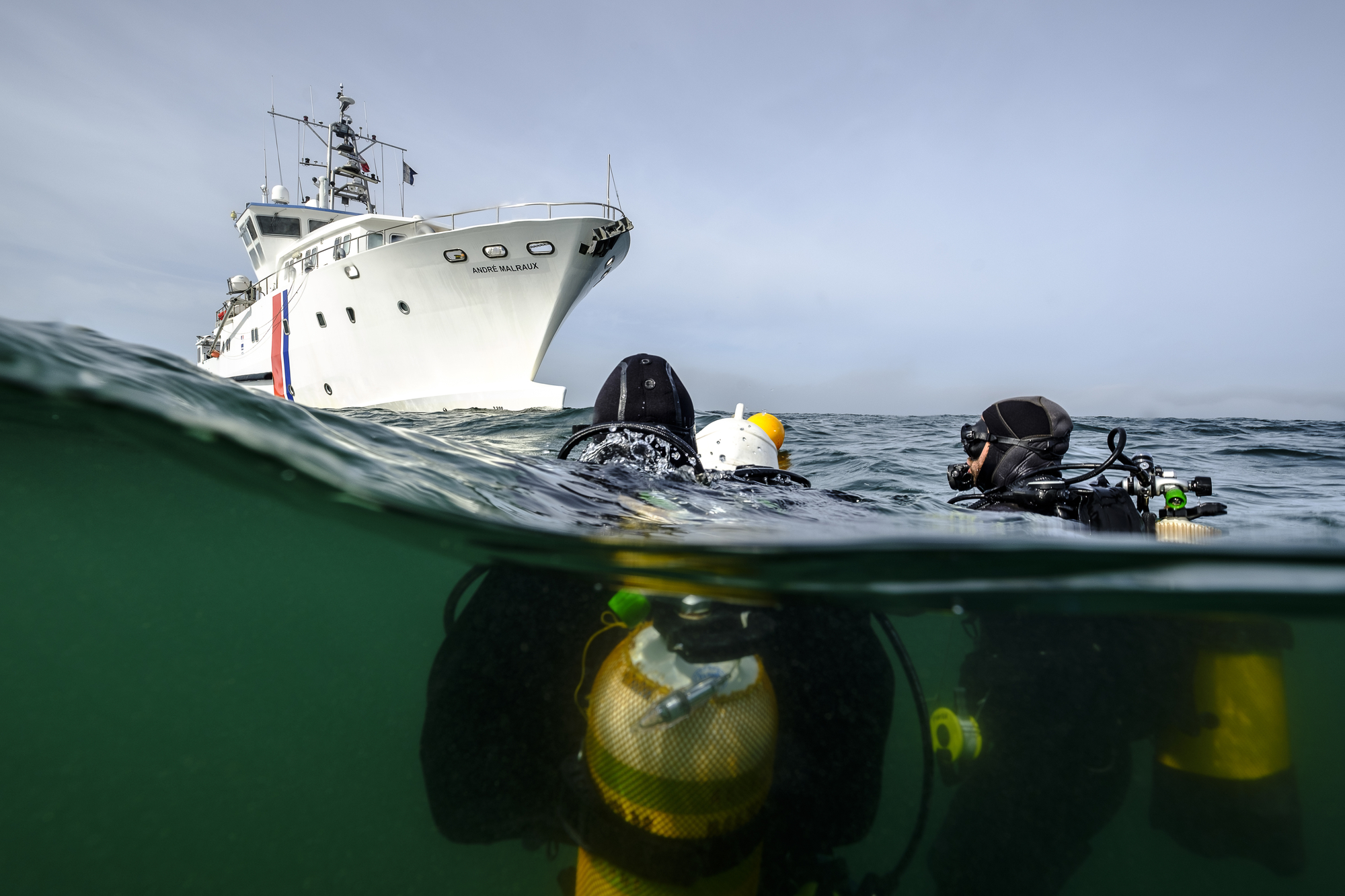- Home
- A systematic inventory (2015-2019)
- Complementary assessment dives
The multibeam echo sounder recordings were complemented, when necessary, by the direct observations of archaeologists diving on the sites.
Objectives and results of the dives
The purpose of assessment dives is to collect additional information that can be useful in the identification of a given site. For example, if the overall form cannot be determined from the acoustic data, do the remains conform to known plans and photographs from the period? Does the condition of the site, or its deterioration, make sense with regard to accounts of how the vessel was lost? Do the visible details correspond to the nature of the site, to the function of the vessel, to its technical characteristics and the hypothesised chronology ?
During the campaigns conducted by the DRASSM between 2017 and 2019, 33 sites from the pre-inventory were assessed by divers. Not all of the remaining sites merited being surveyed, as some were easily identifiable from the acoustic data. For others, their state of degradation was too advanced for divers to provide any pertinent information. Quite often, the prior removal of material culture associated with the structures also limited the scope of the investigation.
The virtues of observing the details
Among the sites surveyed by the DRASSM in 2018, was a barge located off Saint-Marie-du-Mont. The plan and dimensions based on the acoustic data acquired at this site suggested different possible types of barges. Upon investigation, divers noted the absence of a stern ramp, and the location of the bulkheads and fuel tanks. The detailed observation of the barge’s internal fittings confirmed that it is a LBK (Landing Barge Kitchen). Equipped for food preparation, these barges served as floating kitchens for small landing craft that were provisioned by tying up alongside these units.
For larger ships, the observation of technical details is invaluable. The features of cargo ship engines (type of motor, number and diameter of cylinders) are quite easy to discern underwater and can be compared with entries in insurance registers such as Lloyd’s Register of Ships. However, for wrecks that have been salvaged the engines have not always been preserved.





